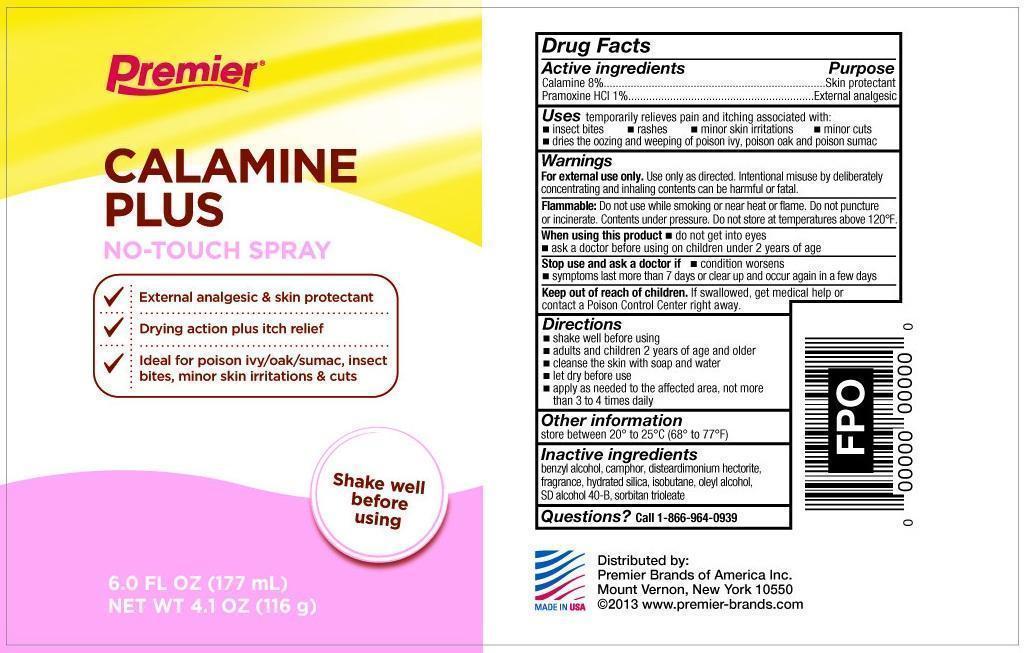Calamine Plus Pramoxine Hcl | Calamine Plus No Touch Spray Aerosol, Spray while Breastfeeding

What is Calamine Plus Pramoxine Hcl | Calamine Plus No Touch Spray Aerosol, Spray ?
Brief: Skin protectant External analgesic
Is using Calamine Plus Pramoxine Hcl | Calamine Plus No Touch Spray Aerosol, Spray safe or dangerous while breastfeeding?
Calamine Plus Pramoxine Hcl | Calamine Plus No Touch Spray Aerosol, Spray Breastfeeding Analsys
Zinc oxide while Breastfeeding
SafeCAS Number: 1314-13-2
It is used topically as an astringent and skin protector, very often together with small amounts of Ferric Oxide to form Calamine (see specific info). It is a product compatible with breastfeeding according to WHO Essential Medicine’s List - 2002.It is also used in dental hygiene products and cosmetics. Widely used for skin protection of the diaper area in infants. Because of the small dose used and poor absorption into plasma of most topical dermatological preparations, excretion into breastmilk in significant amount appears to be unlikely. Do not apply on the breast to prevent infant ingestion; otherwise, wash it off thoroughly with water before the next breast feed.
Pramoxine hydrochloride while Breastfeeding
SafeCAS Number: 140-65-8
Anesthetic drugs for topical use, both dermatological and odontological, have almost nil absorption when properly used. Do not apply on the breast. Otherwise, do it after having nursed, and cleanse it thoroughly with water before next feeding.
I already used Calamine Plus Pramoxine Hcl | Calamine Plus No Touch Spray Aerosol, Spray and meanwhile I breastfed my baby should I be concerned?
Not much study has been done on safety of Calamine Plus Pramoxine Hcl | Calamine Plus No Touch Spray Aerosol, Spray in breastfeeding and its ingredients. Even we do not have complete information about usage of Calamine Plus Pramoxine Hcl | Calamine Plus No Touch Spray Aerosol, Spray in breastfeeding so at this point a trained medical professional could be your best bet. If you observe anything abnormal with your baby please contact 911.
My doctor has prescribed me Calamine Plus Pramoxine Hcl | Calamine Plus No Touch Spray Aerosol, Spray, what should I do?
If your doctor considers Calamine Plus Pramoxine Hcl | Calamine Plus No Touch Spray Aerosol, Spray safe enough to prescribe for you that means its benefits should outweigh its known risks for you.
If I am using Calamine Plus Pramoxine Hcl | Calamine Plus No Touch Spray Aerosol, Spray, will my baby need extra monitoring?
We are not Sure, Please check with your healthcare provider or doctor.
Who can I talk to if I have questions about usage of Calamine Plus Pramoxine Hcl | Calamine Plus No Touch Spray Aerosol, Spray in breastfeeding?
US
National Womens Health and Breastfeeding Helpline: 800-994-9662 (TDD 888-220-5446) 9 a.m. and 6 p.m. ET, Monday through Friday
UK
National Breastfeeding Helpline: 0300-100-0212 9.30am to 9.30pm, daily
Association of Breastfeeding Mothers: 0300-330-5453
La Leche League: 0345-120-2918
The Breastfeeding Network supporter line in Bengali and Sylheti: 0300-456-2421
National Childbirth Trust (NCT): 0300-330-0700
Australia
National Breastfeeding Helpline: 1800-686-268 24 hours a day, 7 days a week
Canada
Telehealth Ontario for breastfeeding: 1-866-797-0000 24 hours a day, 7 days a week
